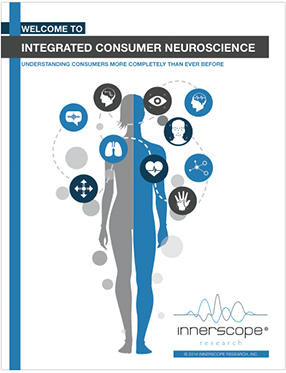As everyone knows, the Super Bowl is by far the most watched televised event in North America, regardless of the teams on the field. Any Super Bowl will attract over 100 million viewers no matter who is playing. In other words, this is not just a game; it’s an event.
And for those of us who are interested in advertising, the most astonishing factor is this: Large numbers of viewers say that the primary reason they tune into the Super Bowl is to watch the commercials on it. In an era when technology has generated clever devices that allow television viewers to zip and zap the commercials on their favorite television programs, this desire to seek out advertising will seem to some people like saying that the primary reason they go to the beach is to get sand blown in their face.
But that’s unfair. The Super Bowl attracts us because the ads we’ll see are the best of the best, and an enormous amount of creative energy goes into them. Creativity deserves an audience and, as a result, the Super Bowl is a great laboratory in which to investigate advertising elements and issues for future learning.
Innerscope Research has been testing Super Bowl ads using the tools of consumer neuroscience since 2008, and that Super Bowl laboratory has provided us with some fascinating and unique lessons about what works in advertising and what does not. In most cases, the lessons can be applied to advertising as a whole, but in some cases the lesson applies primarily to advertising on the Super Bowl because the Super Bowl is in a class by itself. Keep in mind, these insights come from monitoring viewers live, during the game, using biometric technology for moment-to-moment insights on emotional engagement.
Lesson 1: The Super Bowl offers you a rare opportunity to tell a fairly lengthy story.
One of the most consistent failings of a vast number of television commercials is that their creators have assumed that the audience is engaged and ready, willing, and able to sit through an ad as if it were a movie while they munch on popcorn and wait for the inciting incident to set the plot in motion. Most television-advertising viewers, however, are impatient, distracted, or busy with their families, pets or second screens and so aren’t focusing their attention on the commercial. After all, they did not turn on the TV to watch commercials.
Except during the Super Bowl.
Because Super Bowl advertisers have a captive and captivated audience, they can produce relatively lengthy ads as long as: a) the ad has a coherent dramatic structure; b) the brand is clearly identified; and c) the advertiser can pay the hefty freight.
Not surprisingly, Budweiser’s well-told, sentimental story earned very high emotional engagement among Super Bowl ads in 2013. And people are still talking about it.
The classic example is the well-known Budweiser ad from last year’s Super Bowl called “Brotherhood”, which tells the sweet story of a horse growing up on a farm, being tended to by his loving trainer, and leaving the farm for gainful employment at Budweiser, where he becomes one of the company’s showcase Clydesdales. And the story has so many elements of great story telling: growth, loss, young animals, beautiful vistas in the country, and, of course, interspecies Platonic love. The ad is a fairly unusual (and expensive) 60 seconds, but longevity in this case conferred a benefit: after a short lull in the first half of the ad, emotional engagement began to rise at about the quarter-mile post and built steadily – and fairly steeply – from there.
But here is the warning: This may be, fittingly, a “horses for courses” ad – that is, it is perfectly and uniquely suited for the Super Bowl, but in another venue it would not have engaged viewers as well. And the danger signal is represented by that point in the graph to which we just alluded: that fairly steep drop during the first 15 seconds. With a more typical, less attentive audience (that is, the audience for just about any other television program), the drop in engagement would likely have been followed by a run to the kitchen or a Twitter break. . . and the ad may never have been able to build to its climax for those distracted viewers.
The attention value of the Super Bowl is a gift from the gods of advertising. But it is bestowed but once a year, and advertisers should be wary of assuming that success in the Super Bowl is a predictor of success in the real, impatient and more distracted world.
Lesson 2: If you must tell a long story, learn the elements of powerful drama.
As the graph indicates, emotional engagement remained below our “threshold” level (the broken line) for most of the ad — and falls precipitously during the dog’s workout regimen.
In 2012 Volkswagen presented its answer to its famous (and powerfully engaging) Darth Vadar ad “The Force” with a tale of an overweight dog that aspires to run like the wind in order to chase a Volkswagen Beetle. Entitled, “Dog Strikes Back”, the ad eschews a narrator and non-verbally tells its story of the dog’s humiliation, awareness that he is out of shape, his workout regimen – and final triumph as a slimmed down, road-racing machine.
With the exception of a bump in the beginning as audience expections were high, overall, the ad’s level of engagement remained quite low throughout the course of the ad.
Not all stories are created equal.
The kinds of emotion-inducing elements in the Budweiser tale are missing in the Volkswagen story. Particularly relevant, the only relationship in the Volkswagen ad is between the dog and his ultimate prey — the Beetle — and that’s not exactly a loving relationship. There are no visible human beings, no heart-rending displays of affection, no loss and no found. This is basically the story of a canine workout and while it presents a nice before-and-after tale, which can be very engaging, you have to ask yourself what this has to do with buying a car and if the sight of a dog working out will be any more engaging than sitting around watching a human being pumping iron, swimming laps, or riding a stationary cycle.
To generate emotional engagement, advertisers should feel free to borrow from Shakespeare — and Budweiser, who will tell you that the stories that reach the heart tend to be about relationships between species (especially human beings) with beating hearts. And if you can get those hearts beating faster — and, even better, produce a lump in the throat — engagement, brand loyalty, and meaningful action are likely to follow.
Lesson 3: Brand yourself early and often.
Many advertisers are strangely reluctant to display their logos or brand names. A friend once offered this reason: They don’t want to spoil the mystery or break up the story. But ads aren’t mystery stories and, generally, television audiences dislike ambiguity and the unknown when it comes to commercials. They don’t go to advertising to be mystified; they go to advertising to get answers to questions – like who are you and what can you and your brand do for me?
One of the most engaging ads in 2013 was for the Hyundai Santa Fe, which told the highly relevant (and satisfying) story of a boy getting even with bullies by pulling together a football team of deceptively powerful friends – and the ad’s presentations of the boys displaying their unnatural strength and fearlessness is told humorously and, according to Innerscope metrics, very engagingly.
While Innerscope rated this Hyundai near the top of its Super Bowl list, other ad-effectiveness monitors did not. What was the practical effect of the ad? According to CNNMoney, “Hyundai’s commercials were the most effective drivers of web traffic,” and experienced a 738% increase in traffic to Edmonds.com and over 1,000% on AutoTrader.com – by far the best of all Super Bowl car ads.
But there was one problem with the ad: While it told a compelling story, the Hyundai name was virtually non-existent until the end of the ad. And that reluctance to brand the name very likely explains why unaided recall of the brand name was markedly low (only 11%, compared with 41% for Budweiser).
The ad’s success at driving traffic to the web was undoubtedly due to a combination of: a) exceptionally high levels of engagement with the ad, and b) the unusual commitment of Super Bowl audiences to view ads until the end – when the logo and the advertiser’s name was made prominent (of course, we can’t rule out the fact that multiple Hyundai ads were shown, creating synergy for the brand). Imagine what might have happened if viewers had associated the Hyundai name more strongly with the engagement they felt throughout the ad? That kind of branding is something Hyundai might consider when it presents the ad during less rarified airtime that is not the Super Bowl.
And if you want proof that branding will not only not hurt, but will help your advertising effort, consider the previously discussed and highly successful ad for Budweiser. The ad reached the highest level of engagement of any ad in 2013 — and that extraordinary high point was reached when the ad displayed the Budweiser logo in all its glory.
Lesson 4: To be successful and engaging, you don’t have to be likeable.
In 2009 CareerBuilder.com ran an ad that began by presenting a series of fairly disturbing images: a woman in vocational distress screaming in her car followed by an employee being humiliated by his boss (“If you hate going to work and your co-workers don’t respect you. . .”) – and then the ad repeated those scenes and piled on the employee abuse four more times (along the lines, ironically, of The 12 Days of Christmas). Almost all the images are horrific, and the repetition of the lines is undoubtedly grating to some, but to the astonishment of many, the ad was the most emotionally engaging of all the ads in Innerscope’s 2009 Super Bowl study, which is, as far as we know, the only ad-effectiveness research firm to cite CareerBuilder.com as a top-scoring ad.
And so the real question is: Does engagement translate into meaningful action? Consider this evaluation from PC World: “Let’s face it: Most people hate their jobs. It may be no surprise, then, that CareerBuilder’s crappy-career-shunning commercial makes the top of the list of the most viral Super Bowl ads. Nearly 3 million people searched for and watched the spot online. Bet the team who put it together won’t be out of work anytime soon.”
The ad is reminiscent of the infamous Charmin’ Mr. Whipple ads, which constituted one of the most loathed ad campaigns in history (and was the impetus behind a book entitled “Squeeze This, Mr. Whipple”), but one that sold product off the shelf. The lesson here is that in order to sell products, ads sometimes need to induce a need state in the minds of viewers. In the case of CareerBuilder.com, the need state was created when annoyance with the ad reminded viewers of annoyance with their jobs, which inspired action.
The message: Sometimes annoying, repetitive ads can be disliked but engaging.
Lesson 5: Even Niche ads can exploit the drawing power of the Super Bowl.
Yes, you pay a small fortune for a 30-second appearance on the Super Bowl. But if you have a highly engaging ad, the investment can pay off. In 2010, Electronic Arts placed an ad for the video game, Dante’s Inferno, on the Super Bowl docket. That year, Innerscope tested the ad among technophiles for the tech-oriented Wired Magazine. It was referred to as the Geekiest Super Bowl party of the year. Of all the ads tested by Innerscope that year, Dante’s Inferno came out on top and earned exceptionally high biometric engagement scores to the surprise of almost everyone, including the techno-loving writers and editors of Wired, who wrote about the Innerscope results: “In a surprise, the Electronics Arts ad for the upcoming game, Dante’s Inferno, topped the list. If you needed anymore evidence that Wired readers are geeky, take the fact that they liked an ad for a videogame more than any of the beer commercials.“ The real-world result? After the ad appeared during the Super Bowl, sales for this poorly reviewed game soared.
A niche may constitute only 10% of an audience. But if you reach and highly engage a good portion of 10% of 100,000,000 people . . . heaven awaits . . .and sales follow.
The key is in knowing that you have an engaging ad.




Very insightful.
Thanks for making point #4. So many research companies tell clients that ‘liking’ is all you need for success whereas ‘liking’ and ‘wanting’ are separate neural circuits. Berns and Moore ‘A neural predictor of cultural popularity’(2012) showed that subjective likeability was not predictive of sales, whilst activity in the brain’s ‘reward’ system was significantly correlated with sales.
In the UK we have the example of ‘Go Compare’, a price comparison website whose advertising regularly tops the polls of ‘most annoying/hated/irritating’ yet the company has enjoyed double digit revenue growth since launch.